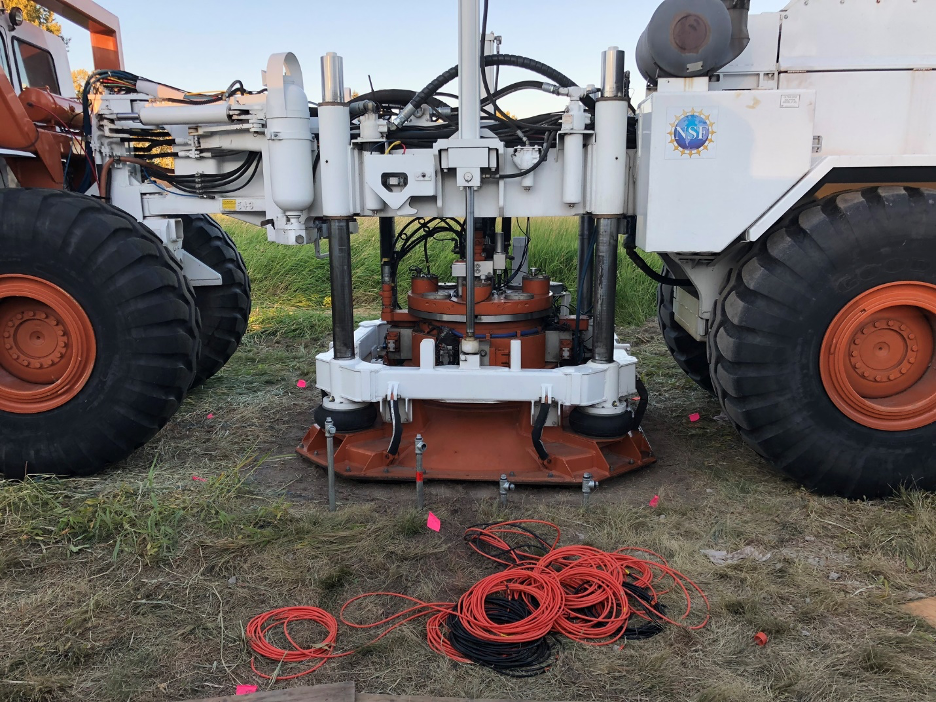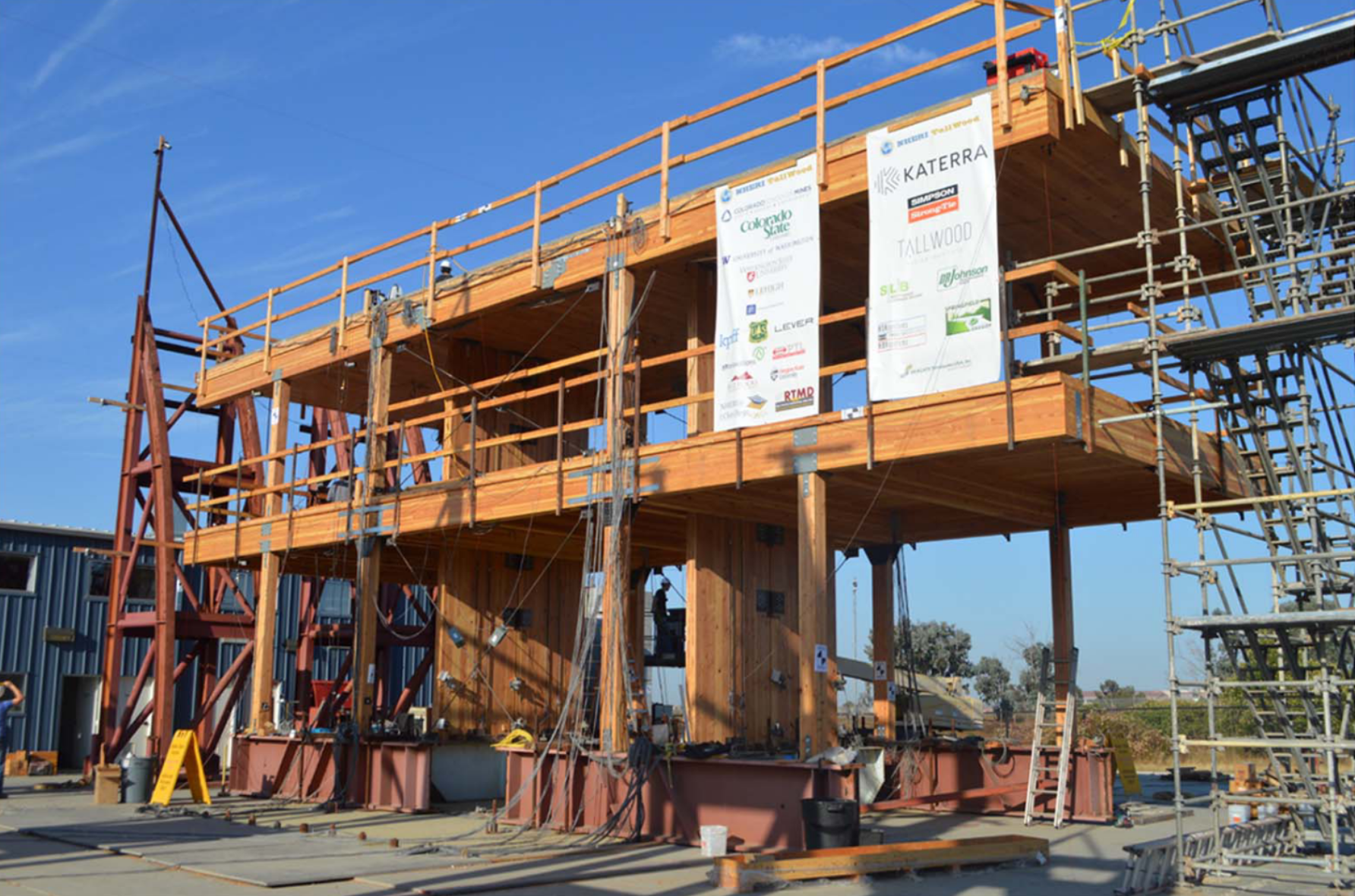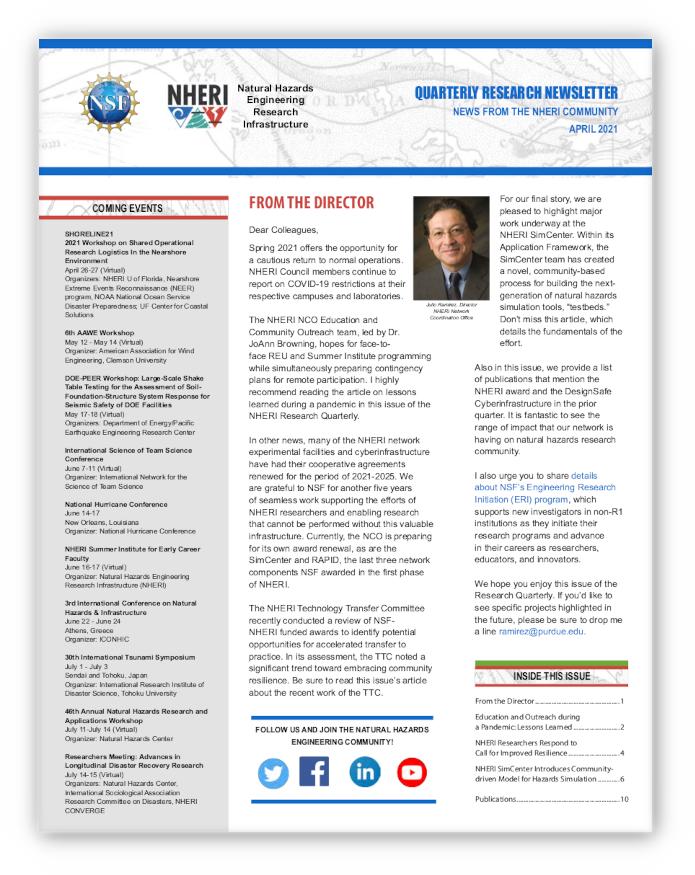NHERI Researchers Respond to Call for Improved Resilience
Tech Transfer Committee identifies NHERI-funded projects focused on resilient seismic design
Published on April 8, 2021

Bill Holmes, SE
Senior Consultant Rutherford + Chekene Chair, NHERI Tech Transfer Committee
Among natural hazards engineering researchers, the last few years have seen a national focus on improving seismic community resilience and functional recovery. This shift is practical. A holistic approach concentrates less on hardening infrastructure, which can be expensive, and more on ensuring swift return to normal civil operations, to minimize economic hardships because of natural disasters.
For examples, see the Earthquake Engineering Research Centers 2020 Distinguished Lecture by David Bonowitz, Functional Recovery: Designing for Community Resilience, in which Bonowitz discusses how earthquake-resistant design is receiving new attention through state and federal legislation and showing new feasibility through research and technology.
Also, the National Institute of Science and Technologys publication, Options for Improving Post-Earthquake Re-Occupancy and Functional Recovery Time defines terms, provides detailed analysis and options, and explains why re-occupancy and functional recovery concepts are so vital to embrace.
ANALYSIS OF 81 ACTIVE RESEARCH AWARDS
NHERIs Technical Transfer Committee recently observed this trend in its February 2021 analysis of 81 active NSF NHERI Research Awards.
In our review, we noted a robust response to the call for improved community resilience after seismic events, both nationally and in the NHERI Science Plan, said Bill Holmes, committee chair. In fact, based on NSF award summaries, we found that 14 of the 81 NHERI awards are narrowly focused on improving seismic community resilience.
Find examples of these awards specified below. These NHERI research projects, among others, will provide a foundation for a new inventory of low-damage buildings that will provide increased seismic resilience in U.S. cities. For further information on the projects, see NSF.gov.
For more information about the NHERI Technology Transfer Committee, visit the TTC page on the NHERI-DesignSafe website, or download the TTC flyer.
Award: 1761659
PI: Y.L. Mo
This research is developing a unique system of seismic isolation around and under structures within the soil. Among the advantages of such barriers is the ability to isolate the structure from vertical shaking as well as horizontal shaking.
Title: Liquefaction Mitigation of Silts using MIDP and Field Testing with NHERI UTexas Large Mobile Shaker
Award: 1935670
PI: Arash Khosravifar
In this project, Liquefaction Mitigation via Microbial Denitrification (MIDP) is targeted at low-plasticity silts that are susceptible to liquefaction in Oregon, a widespread issue. The research involves in-situ shaking using NHERI@UTexas unique, mobile dynamic shakers at a site before and after treatment.

NHERI@UTexas mobile shaking equipment on-site in Portland.
Title: Frame-Spine System with Force-Limiting Connections for Low-Damage Seismic Resilient Buildings
Award: 1926326
PI: Richard Sause
This frame-spine-force-limiting connection system will rely on a conventional, economic base system that resists a significant proportion of the lateral load. The system judiciously employs floor-level force-limiting deformable connections and an elastic spine to protect the base system. This project will be conducted in collaboration with an ongoing synergistic research program in Japan.
Title: A Resilience-based Seismic Design Methodology for Tall Wood Buildings
Award: 1634204
PI: Jeffrey Berman
A recent new timber structural innovation, known as cross laminated timber (CLT), was developed in western Europe and is now being implemented around the world as a sustainable and low carbon-footprint alternative to conventional structural materials for tall buildings. This research will develop a seismic design methodology for resilient tall wood buildings that can be immediately re-occupied following a design level earthquake and quickly repaired after a larger earthquake.
Title: Resilient Seismic Retrofit by Integrating Selective Weakening and Self-Centering
Award: 1662963 PI: Sriram Aaleti
Many existing seismic retrofit methods achieve life safety through permanent damage (similar to the design of new buildings). Seismic retrofit practice in the U.S. also allows more damage than expected in new buildings. This project will investigate a new seismic retrofit method which focuses on not only public safety but also on resiliency by minimizing damage.
The following two similar but unrelated awards are investigating the use of dynamic instruments mounted in a concrete building to determine the level of damage after an earthquake. There is currently a high level of effort (time and cost) involved in inspecting and analyzing concrete buildings after an earthquake to determine safety and potential repairs. This effort often delays the re-use of the building.
Title: Japan-U.S. Collaboration on the Seismic Performance of Reinforced Concrete Structures
Award: 2000478 PI: Paolo Calvi
This award includes thoroughly instrumenting a full-scale concrete building on the shake table at E Defense in Japan to identify any type of dynamic recordings that are a good indicator of damage level.
Title: Field Testing of Concrete Buildings for Damage and Collapse Assessment
Award: 2036193 PI: Halil Sezen
This award is to instrument a parking structure during demolition to identify any type of dynamic recordings that are a good indicator of damage level.







